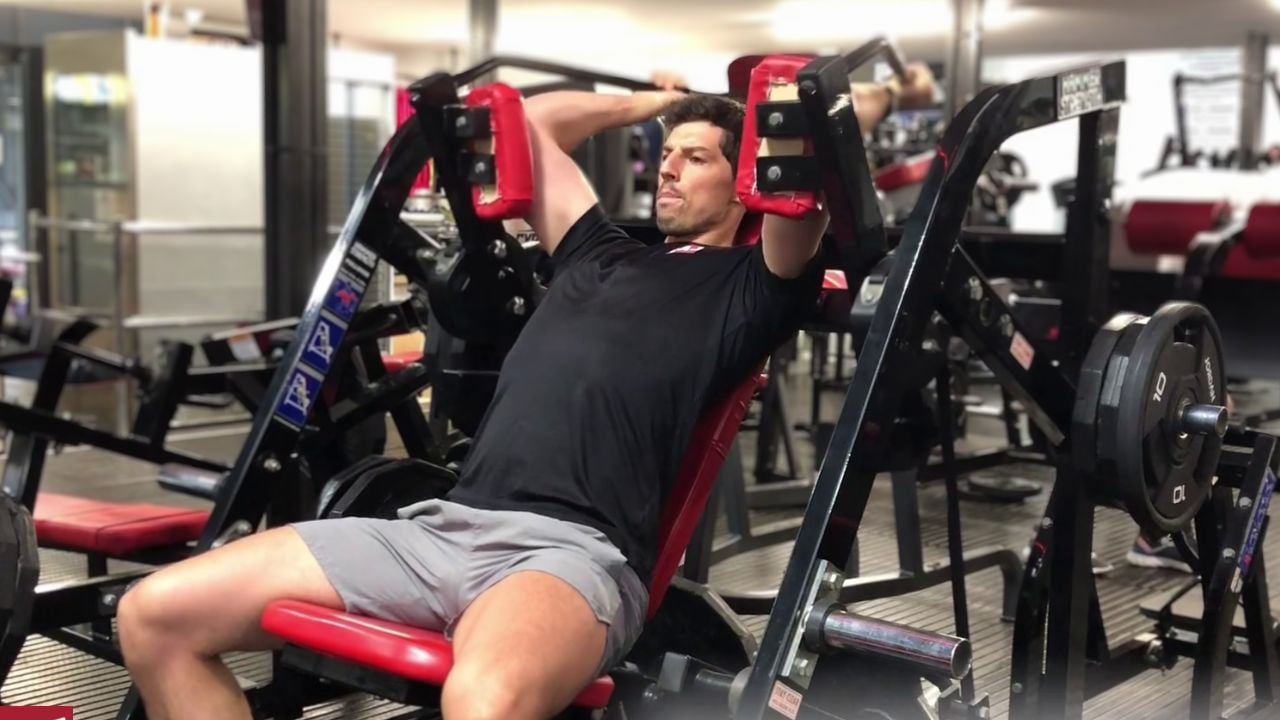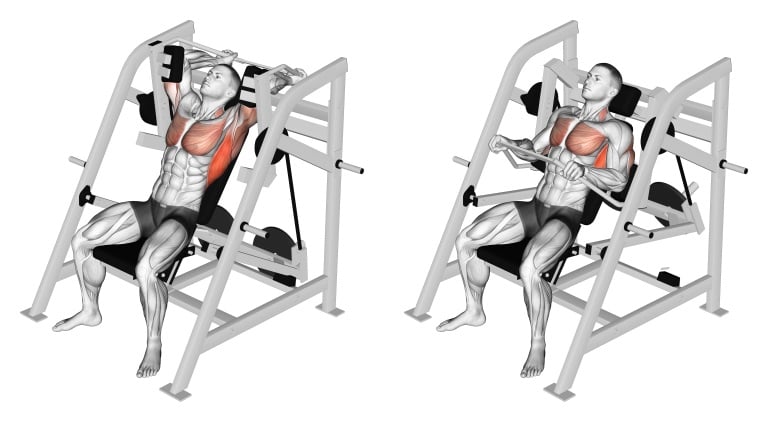Have you ever felt like your chest and back workouts weren’t working? You are doing exercises like bench presses, rows, and pull-ups but aren’t getting stronger. That’s where the pullover machine comes in.
This fantastic piece of equipment will help you take your upper body training to the next level.
Many people overlook this exercise or don’t know how to execute it properly. But fear not—I’ve been there too.
I still remember the first time I tried the pullover machine. I was a bit skeptical. However, after several weeks of consistent training, I noticed significant improvements in my lat and chest development.
That’s why,
We’ll cover everything from proper form and technique to the specific muscles targeted, variations and progressions, and this exercise’s numerous benefits.

Machine Pullover Muscles Worked
The machine pullover is a compound exercise that works multiple muscle groups, including the back, chest, shoulders, and triceps.
- The primary muscles targeted during this exercise are the chest and latissimus dorsi (Back).
- The secondary muscles worked are the deltoids (shoulders), triceps, rear delt, serratus anterior, teres major, and core muscles.
Know how they worked:
- Latissimus dorsi (lats) – Pulling motion contracts the lats to return the arms.
- Pectoralis major (chest) – Pushing motion contracts the pecs to extend the arms forward.
- Triceps – Extend the arms overhead and control the pullover movement.
- Shoulders – Stabilize the upper body and keep arms overhead.
- Core – Contract isometrically to stabilize the spine during exercise.
- Serratus anterior – Hold shoulder blades down and back during the move.

How To Do Machine Pullovers To Train Lats
- Adjust the pullover machine seat to the appropriate height so that your head and shoulders are supported on the pad when lying down.
- Lie down on the bench with your legs extended and feet flat on the floor or platform.
- Reach up and grasp the handles or bar with an overhand grip.
- Extend your arms straight up over your chest.
- Exhale and pull the weight down towards your abs by contracting your lats and pecs.
- Bring the handles or bar down until they’re roughly aligned with your upper chest or face.
- Pause briefly at the bottom of the movement.
- Inhale and slowly extend your arms back overhead.
- Do 10–12 reps and 3–4 sets.

Tips and Form
- Avoid arching your lower back or lifting your hips off the bench.
- Avoid jerky or swinging motions, as this can lead to injury.
- Exhale as you pull the bar down. Inhale as you return to the starting position.
- Keep your body in a straight line, avoiding arching your lower back.
- Engage your core and lats before you start the movement. Pull with your back, not just your arms.
- Make sure the movement is smooth and controlled. You should also focus on stretching and contracting the muscles.
How To Train Lats and Chest With Pullover Machine
Train Lats (Latissimus Dorsi)
- Use a wider grip width on the handles or bar. This will recruit more lat fibers and emphasize the pulling motion.
- Focus on pulling the weight in an arcing motion toward your hips and lower abdomen. This movement pattern fully engages the lats.
- At the bottom of the movement, squeeze your lats by pulling your shoulders back and down. This contraction will help you feel the lat muscles working.
- Lean your torso back slightly (15–20 degrees) to increase the stretch on the lats at the start position.
Train Lats Chest (Pectoralis Major)
- Use a narrower grip width to shift more emphasis onto the chest muscles.
- Pull the weight toward your chest area instead of down toward your hips.
- Keep your chest lifted and pointed towards the ceiling throughout the movement to better engage the pecs.
- Pause briefly when the handles are near your chest to maximize the pec contraction.
- Perform partial reps by lowering the weight only halfway down to maintain constant tension on the pecs.
Machine Pullover Benefits
Machine pullovers offer a similar movement pattern to dumbbell and barbell pullovers, effectively targeting your lats and chest. However, their main advantages are ease of use, safety, and consistent tension.
- Easier and Safer: The machine’s fixed path helps you maintain proper form, reducing the risk of injury compared to free weights.
- Constant Resistance: Unlike dumbbells or barbells, which lose tension at the top of the movement, the machine pullover provides a more consistent challenge throughout the entire range of motion.
- Thorax Expansion: Like other pullover variations, the machine pullover allows for a good stretch at the top, expanding your ribcage.
- Isolating Muscle Groups: it lets you better target-specific muscles by adjusting your grip and body position.
Takeaways
The machine pullover is a safe and effective exercise for building a stronger, more muscular back and chest.
It offers many advantages, like consistent tension, ease of use, and reduced risk of injury.
Next time you’re in the gym, give it a try.
Please share your experience or questions in the comments below.
References
- Marchetti, Paulo & Uchida, Marco C.. (2011). Effects of the Pullover Exercise on the Pectoralis Major and Latissimus Dorsi Muscles as Evaluated by EMG. Journal of applied biomechanics. 27. 380-4. 10.1123/jab.27.4.380.
- 2. Pezarat-Correia, Pedro & Medeiros, Pedro & Fernandes, Orlando & Vaz, João & Silva, Luís & Moraes, Antonio. (2020). Comparison of shoulder and trunk muscle activation between different pullover exercises. Revista Andaluza de Medicina del Deporte. 13. 127-133. 10.33155/j.ramd.2020.03.004.

Manish is a NASM-certified fitness and nutrition coach with over 10 years of experience in weight lifting and fat loss fitness coaching. He specializes in gym-based training and has a lot of knowledge about exercise, lifting technique, biomechanics, and more.
Through “Fit Life Regime,” he generously shares the insights he’s gained over a decade in the field. His goal is to equip others with the knowledge to start their own fitness journey.
